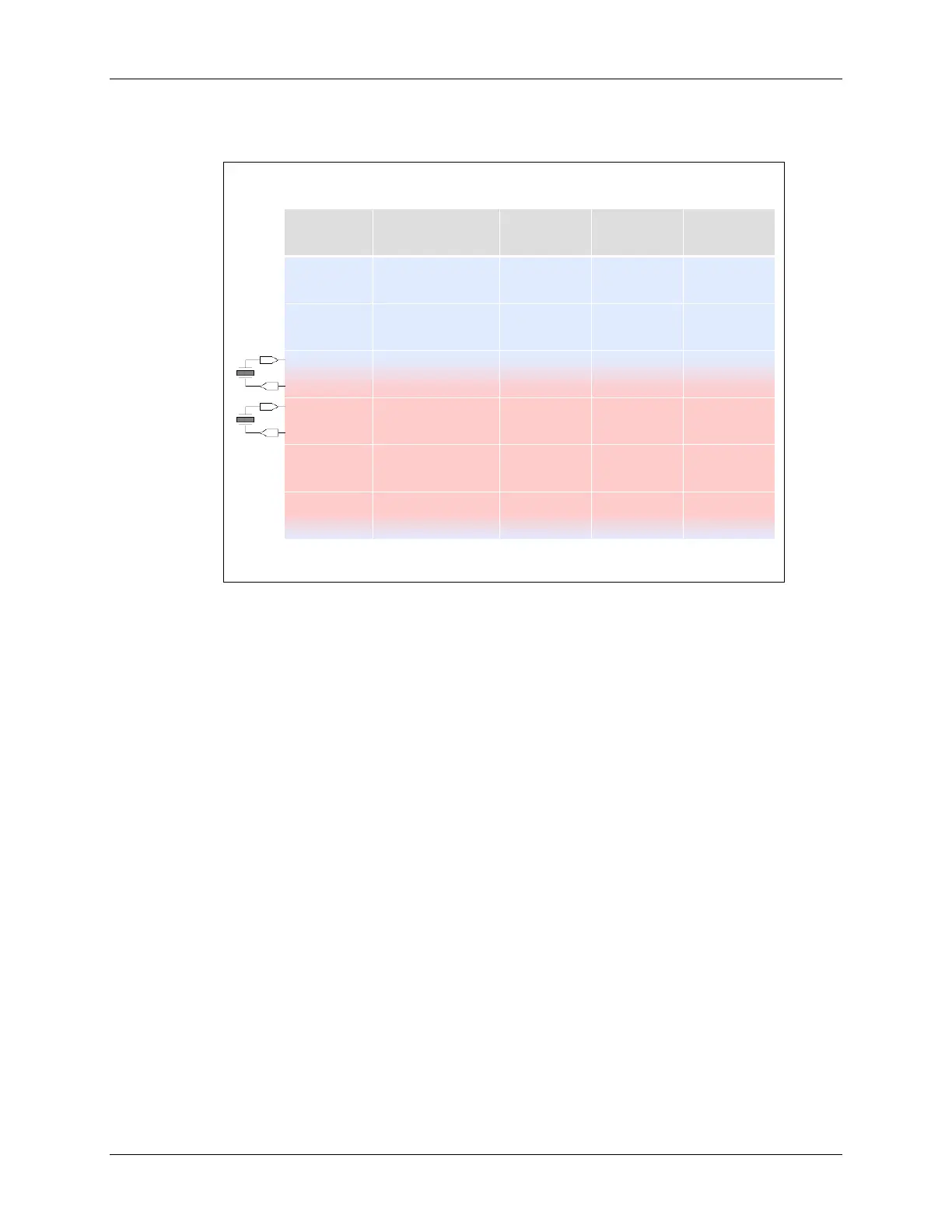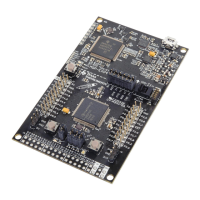Clocking
Here we see that the typical sources are listed in the order from lower to higher frequency. In this
case, we’re looking specifically at the clock source options found on the ‘F5529.
Clock Source Details (‘F5529)
Frequency Precision
Current /
Startup
Comments
VLO
~10 KHz
Very Low
(
±
40%)
60nA
Use as Ultra
REFO 32768 Hz
Med/High
(3.5
%
)
3µA
25µS
Trimmed to
3.5%
XT1
HF: 4-Max MHz
High
75nA
500-1k mS
Crystal or
Ext Clock
XT2 4-40 MHz High
400µS
Crystal or
Ext Clock
DCO
100 KHz to
CPU Max
Low/Med
60µA
200nS
VLO: most MSP430 devices provide a Very Low-frequency Oscillator (VLO). While not a highly
accurate clock, this source is extremely low-power. Also, as it is internal to the chip, it ends up
being very inexpensive. If you need to wake up the processor every couple seconds to perform a
task (i.e. read a sensor), the low-power VLO is a common way to get this done.
REFO: not all devices provide the REFerance Oscillator (REFO) source, but when available, it's a
low-cost, internal source for the common "watch crystal" frequency. This can be a convenient way
to drive a real-time clock in your system without requiring an external crystal. While not quite as
accurate as some crystals, it's a less-expensive, robust solution.
XT1 and XT2: as the graphic demonstrates, XT1 and XT2 provide the eXTernal clock inputs.
These sources, along with a couple pins each, provide a means of connecting to external crystal
oscillator sources.
− Not all devices provide both clock sources; for example, we saw on the previous page
that the 'G2553 only has XT1 (in fact, it's actually called LFXT1 on that device).
− Why would you need two external clocks? For those cases when you need very precise
low and high frequency clocks. For example, you might use XT1 to drive a real-time clock
(RTC) while the 'F5529 uses XT2 to source a high-speed, high-precision clock to the
USB peripheral.
− It should also be noted that you can connect a digital oscillator signal directly to these
inputs; that is, you don't have to use a crystal if you've already got the necessary
frequency on your board.
− Bottom line, the XT inputs provide the highest possible precision, but are a little less
robust since crystals can often be one of the most delicate components in a system.
4 - 10 MSP430 Workshop - MSP430 Clocks & Initialization
